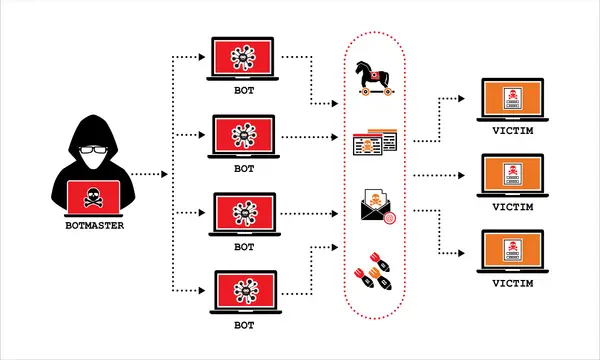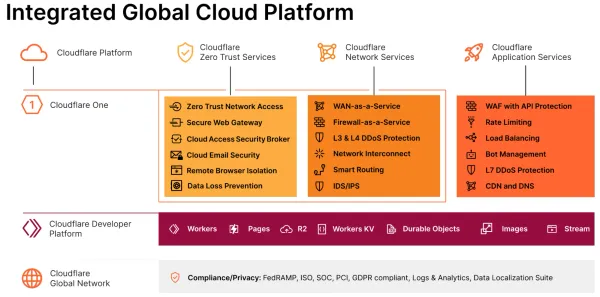August 2025: A Month of Unprecedented Cyber Attacks and Data Breaches

Bottom Line Up Front: August 2025 has witnessed an alarming surge in sophisticated cyber attacks, with major brands like Google, Pandora, Chanel, and dozens of other organizations falling victim to ransomware groups and data theft campaigns. The month's incidents highlight critical vulnerabilities in third-party platforms and demonstrate cybercriminals' evolving tactics.
Executive Summary
The first week of August 2025 alone has produced more significant cyber incidents than many organizations experience in an entire year. From luxury retailers to technology giants, attackers have demonstrated their ability to infiltrate even the most well-protected systems, primarily through third-party vulnerabilities and sophisticated social engineering campaigns.
Key Statistics:
- Over 4,100 publicly disclosed data breaches occurred last year, roughly eleven breaches per day
- Qilin ransomware led April 2025 with 72 data leak disclosures, more than doubling since February 2025
- Multiple high-profile breaches reported daily in August 2025
Major August 2025 Incidents
The ShinyHunters Salesforce Campaign
Timeline: Early August 2025 Victims: Google, Pandora, Chanel, and other major brands Attack Vector: Salesforce platform compromise through social engineering
Google confirmed it was among the victims of an ongoing data theft campaign targeting Salesforce instances, where publicly available business names and contact details were retrieved by the threat actor. The campaign has been attributed to the ShinyHunters group, tracked by Google Threat Intelligence as UNC6040.
How the Attack Works:
- Attackers use voice phishing (vishing) techniques to trick employees into believing they are calling from IT
- Victims are persuaded into handing over their Salesforce credentials and MFA tokens, or adding a malicious version of Salesforce's Data Loader app
- Unauthorized access to customer databases follows
Pandora Jewelry Data Breach
Date: August 6, 2025 Impact: Customer names, email addresses, phone numbers, and birthdates exposed Method: Third-party Salesforce platform compromise
Jewelry giant Pandora A/S confirmed a significant cybersecurity incident that compromised sensitive customer information. While no financial information was accessed, the breach affects millions of customers globally and represents a significant blow to consumer trust in the luxury retail sector.
Chanel Luxury Brand Breach
Detection Date: July 25, 2025 Notification Date: August 1, 2025 Scope: US customer database Data Compromised: Names, email addresses, home addresses, and phone numbers
French fashion giant Chanel has confirmed a data breach affecting its U.S. customer database as part of a broader Salesforce credential theft and extortion campaign tied to the ShinyHunters threat group.
Air France and KLM Customer Data Exposure
Timeline: Early August 2025 Method: Third-party service provider breach Data Exposed: Names, contact details, and Flying Blue numbers
Air France and KLM Royal Dutch Airlines have reportedly sent breach notifications to affected customers, informing them about a third-party data breach impacting their personal data.
The Qilin Ransomware Surge
Unprecedented Activity Levels
Qilin ransomware led April 2025 with 45 data leaks, driven by NETXLOADER's stealthy malware delivery method, and the group has maintained this aggressive pace throughout the summer. Multiple organizations reported Qilin attacks on August 8, 2025, including Lodi Police Department, Admiral operations, healthcare organizations, and construction companies.
Recent High-Profile Targets
The ransomware group has demonstrated its capability to target diverse sectors:
- Healthcare: Multiple medical facilities and healthcare organizations
- Government: Police departments and municipal services
- Corporate: Manufacturing, construction, and technology companies
- Education: Various educational institutions
Financial Impact
Qilin has amassed over $50 million in ransom payments in 2024 alone and ranked as the most prevalent ransomware in public threat intelligence reports by 2025.
Emerging Threat Patterns
Third-Party Platform Vulnerabilities
The August 2025 incidents reveal a critical trend: attackers are increasingly targeting third-party platforms rather than directly attacking primary systems. The breach occurred through a supply chain attack, where threat actors gained access to customer data via a third-party service provider's platform rather than directly targeting Pandora's primary systems.
Social Engineering Evolution
The group has now shifted to using Python scripts that perform a similar function to the Data Loader app, as well as TOR IPs to obfuscate their location, demonstrating the rapid evolution of attack methodologies.
Retail Sector Targeting
With Q2 2025 seeing retail ransomware incidents surge 58% from the previous quarter, the sector faces unprecedented threats. The pattern of targeting luxury brands suggests attackers are specifically focusing on high-value customer databases.
Industry Impact and Response
Market Reactions
Pandora's stock dipped slightly on European exchanges following the announcement, reflecting investor concerns over brand trust. Similar market reactions have been observed across affected companies, highlighting the financial implications beyond immediate breach costs.
Security Expert Warnings
Cyber security experts warn it could take a year for Pandora to recover after the latest attack saw customer data compromised, emphasizing the long-term reputational and operational impacts of these incidents.
Defensive Strategies and Recommendations
Immediate Actions
- Third-Party Risk Assessment: Conduct comprehensive audits of all third-party platforms, especially those handling customer data
- Employee Training: Implement advanced social engineering awareness programs focusing on vishing attacks
- OAuth Security: Review and restrict OAuth application permissions on cloud platforms
Long-Term Security Measures
- Zero Trust Architecture: Implement Zero Trust Architecture (ZTA), with isolation and segmentation, to limit blast radius in case of a ransomware or similar network-aware breach
- Incident Response Planning: Develop and regularly test comprehensive incident response plans
- Backup Strategies: Ensure immutable, offline backup systems that cannot be compromised during attacks
Monitoring and Detection
Organizations should focus on detecting:
- Unusual OAuth application installations
- Abnormal data access patterns
- Unauthorized API calls to cloud platforms
- Social engineering attempts targeting employees
Looking Ahead: Threat Landscape Predictions
Continued Targeting of Cloud Platforms
The success of August 2025 attacks suggests continued focus on cloud-based CRM and business platforms. Organizations should expect:
- More sophisticated social engineering campaigns
- Increased targeting of third-party integrations
- Evolution of attack techniques to bypass traditional security measures
Ransomware Group Consolidation
Qilin is said to have benefited from an influx of affiliates following RansomHub's abrupt shutdown at the start of last month, indicating ongoing consolidation in the ransomware ecosystem that may lead to more coordinated and sophisticated attacks.
Conclusion
August 2025 has demonstrated that even the most recognizable brands and well-funded organizations remain vulnerable to sophisticated cyber attacks. The incidents highlight critical gaps in third-party security oversight and the effectiveness of social engineering tactics against human targets.
Key Takeaways:
- Third-party security is organizational security - vulnerabilities in vendor platforms directly impact customer data
- Social engineering remains highly effective - technical security measures must be complemented by comprehensive human-focused defenses
- Rapid response is critical - organizations that detected and responded quickly minimized damage
- Transparency builds trust - companies that promptly notified customers and stakeholders maintained better reputational standing
Organizations must recognize that cybersecurity is no longer just an IT issue but a fundamental business risk requiring board-level attention and comprehensive, multi-layered defense strategies. The events of August 2025 serve as a stark reminder that in today's threat landscape, it's not a matter of if an organization will be targeted, but when and how well-prepared they will be to respond.
This analysis is based on publicly available information and threat intelligence reports as of August 8, 2025. Organizations should consult with cybersecurity professionals for specific guidance tailored to their environments and risk profiles.





